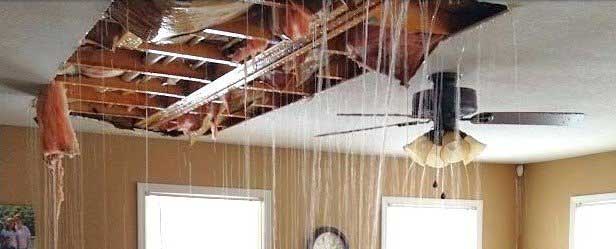Do's & Don'ts of Water Restoration.
Do's & Don'ts of Water Restoration.
Blog Article
The author is making several great pointers related to 5 Home Safety Tips To Reduce The Risk Of Fire And Water Damage in general in this post just below.

Water provides life, yet water intrusion on some components where it's not intended to be can result in damage and also inconvenience. It can peel away the surface area and also deteriorate the product's foundation if the water seeps into your structure. Mold and mildew as well as mold additionally grow in a damp atmosphere, which can be dangerous for your and also your household's health. On top of that, homes with water damages smell old and also mildewy.
Water can originate from many sources like hurricanes, floodings, burst pipes, leaks, as well as sewage system concerns. If you have water damages, it's much better to have a functioning knowledge of safety preventative measures. Here are a couple of guidelines on exactly how to handle water damages.
Do Prioritize Residence Insurance Protection
Seasonal water damage can originate from floods, seasonal rains, and also wind. There is likewise an incident of an unexpected flooding, whether it originated from a defective pipeline that instantly ruptures into your residence. To shield your residence, obtain home insurance policy that covers both disasters such as natural disasters, and also emergency situations like damaged plumbing.
Do Not Neglect to Shut Off Utilities
When disaster strikes as well as you remain in a flood-prone area, switch off the primary electric circuit. Turning off the power stops
electrical shocks when water can be found in as water works as a conductor. Do not forget to turn off the main water line shutoff as a method to avoid even more damages.
If the floodwaters are getting high, keep your furnishings stable as they can move and trigger extra damage.
Do Stay Proactive and also Heed Weather Condition Alerts
If you live in an area pestered by floodings, remain prepared and also positive at all times. Pay attention to the information as well as discharge warnings if you live near a body of water like a creek, river, or lake.
Do Not Neglect the Roof
Your roofing professional should take care of the malfunctioning gutters or any kind of other indications of damages or weakening. An evaluation will protect against water from moving down your walls and also saturating your ceiling.
Do Focus On Little Leaks
There are red flags that can draw your interest and indicate to you some damaged pipelines in your home. Signs of red flags in your pipes consist of bubbling paint, peeling off wallpaper, water touches, water spots, or leaking noises behind the wall surfaces. Repair and check your plumbing repaired prior to it results in substantial damages to your residence, finances, and also an individual headache.
Do Not Panic in Case of a Ruptured Pipe
Timing is vital when it comes to water damage. If a pipeline ruptureds in your house, promptly closed off your primary water shutoff to reduce off the source as well as prevent even more damages. Call a credible water damage repair expert for help.
Water provides life, but water breach on some components where it's not intended to be can result in damages and also aggravation. In addition, houses with water damage smell musty and also old.
Seasonal water damages can come from floodings, seasonal rains, and also wind. Indications of red flags in your pipes include gurgling paint, peeling wallpaper, water touches, water spots, or leaking audios behind the walls. If a pipeline bursts in your home, instantly closed off your primary water shutoff to reduce off the resource as well as prevent even more damages.
Water Damage Do's and Don'ts
Do's
Always use rubber gloves to protect your hands & rubber boots to protect your feet and legs. Damage from water and bacteria growth can begin within hours. Call for professional help. Remove as much water as possible by mopping and blotting with sponges. Pull up wet rugs and carpets if hardwood floors are below. Lift draperies off the floor, loop through a coat hanger and place the hanger on the drapery rod. Wipe furniture, prop up wet furniture cushions for even drying and place aluminum foil under furniture legs. Move photos, paintings, art objects, computers, other electronics and valuables to a safe, dry location. Do not remove books from shelves. Pack them tightly to prevent page warping until a restoration professional can begin this specialized drying. Ventilate wet areas. Turn on air conditioning for faster drying in summer (only if there is no visible mold) and winter, alternate cycles of opened windows and heating. Also, open drawers, closets and cabinet doors to enhance drying. Don'ts
Do not enter rooms where there is wet and sagging ceiling! Do not enter a room with standing water until electricity has been turned off. Do not use a regular household vacuum to remove water. Use heat to dry closed building interiors. Mildew and more moisture damage can occur. Do not use electrical appliances while on wet carpet or flooring. Do not disturb visible mold. https://www.myknowledgebroker.com/blog/personal-insurance/water-damage-dos-and-donts/

I was introduced to that report about Preventing Fires and Water Damage In Your Home from someone on a different domain. Loved our posting? Please share it. Let others find it. Thank-you for your time spent reading it.
Report this page